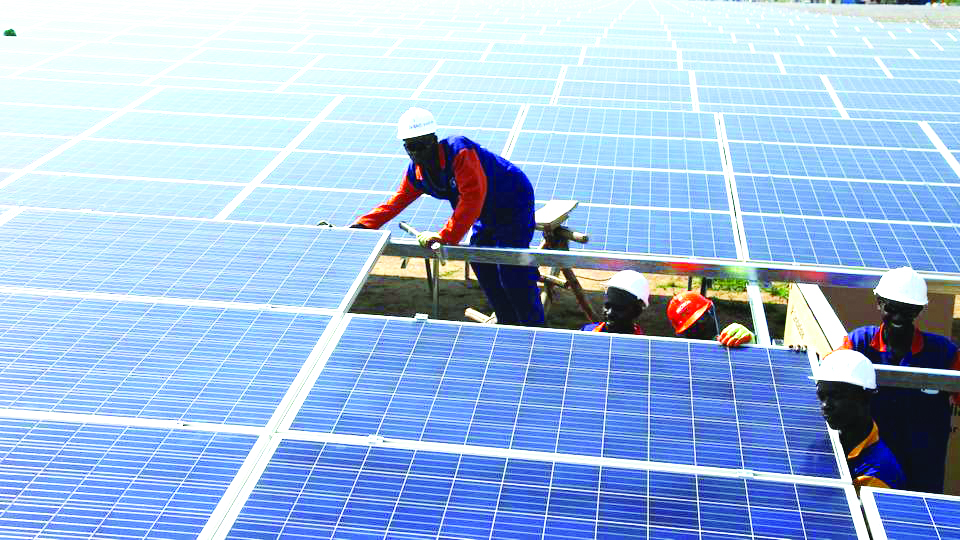By Lynn Feliciah
Generations and generations of people in the world have been, and are still utilising renewable energy because of its increased availability and sustainability.
Renewable energy is energy from natural resources. This can be the wind, water, sun and many others. Years ago, the most common source of energy in different parts of the world was the wind mill.
Today, that has evolved into using solar energy from the sun, hydroelectricity from water bodies, geothermal energy, biogas and biomass.
Use renewable energy
With a number of natural resources in all her corners, Uganda has the ability to use all types of renewable energy. The most common one, however, is biomass which accounts for 94 per cent of the total consumption in the country.
In urban areas, most people use charcoal as a source of energy, while firewood and wood wastes are used mostly in rural areas.
Hydroelectricity is also very common, with its biggest production base at River Nile. The country is estimated to produce about 2,000 Mega Watts of electricity from River Nile alone.

This form of energy is used in many parts of the country, mostly in urban centres, with rural areas also gradually picking up.
Uganda also has the privilege of exporting some of her hydroelectricity to neighboring countries. Given the high monthly charges for hydroelectric power in the country, many people, especially in rural areas are turning to solar energy rapidly.
This specific type of energy uses solar panels which tap heat from the sun, and transform it into energy. It is mostly used for lighting. But those with bigger panels use it for other purposes like cooking, farming (irrigation) and like industrial powering.
Although the installed capacity of solar energy-based power is currently one per cent (50.8 MW) of 5,000 MW, solar energy, accorsing to a 2020 report by the Electricity Regulatory Authority, has a great potential to provide about 39.4 per cent of the renewable-based power capacity in Uganda by 2040.
For farming communities, the use of animal dung to create energy is common. Biogas is mainly used for cooking occasionally in these areas and lighting in rare cases.
Other sources of renewable energy include geothermal energy at the hot springs in western Uganda.
The main geothermal resources are in close proximity to Lake Albert and Lake Edward, with three promising prospects at Katwe-Kikorongo in Kasese district, Buranga in Bundibugyo district and Kabiro in Hoima disctrict.
There has not been much implementation on these sites, but as of 2018, several private developers were making progress in exploration at these sites.
It should be noted however, that the country has not reached its full potential in using renewable energy.
Advantages
On a more environmental outlook, renewable energy produces zero carbon emissions. Greenhouse gases or other pollutants are totally nonexistent and with a drive to curb global warming, this is a win.
Renewable energy also leaves us with clean water and air unlike fossil burning that contaminates the environment. Fossils release carbon dioxide, nitrous oxide and metals like mercury, which are harmful to health in general.
Use of renewable energy helps to diversify supply of energy. In so doing, it reduces dependency on exported fuels. Renewable energy also creates job opportunities for the locals, hence economic development.
In terms of affordability, renewable energy is a much cheaper source of energy compared to the non-renewables.
It is way cheaper to use solar energy than oil and gas for example.
Many companies in the oil and gas sector have therefore heavily invested in renewable energy in an attempt to keep up with the trend.
According to a report by United Nations Development Programme (UNDP), prices of renewable energy have decreased, favouring most families who may not afford electricity costs.
In an instance, since 2010, the price of solar energy has reduced by 89 per cent, and solar is now the cheapest energy in history.
Amid an exceptionally challenging year, and despite the Covid-19 pandemic, the renewables sector has shown some resilience.
As said, every good thing has something bad. Renewable energy is no exception. Some sources of renewable energy like solar are unreliable especially during rainy seasons.
The capital costs of some renewable energy can be high, discouraging people from installing them.
However, this is a one-time cost.
With the growing threat of global warming in the recent years,adoption and usage of renewable energy across nations may be the best control measure available.
Remember, it has zero carbon emissions and it does not destroy natural habitats like the non-renewables.
+++++++++++++++++++++++++++++++++++++++++
Subscribe to our website and be the first to receive great Christian news, health information, pastoral guidance, environment, farming and many others. Also, Like and follow us on Facebook at Good News UG.





















